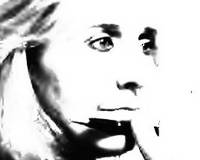BOSTON (Reuters) - An online auction of artwork by a serial sex killer triggered outrage in Massachusetts on Tuesday where lawmakers proposed to block criminals from profiting on what they called "murderabilia," setting off a debate on free speech rights of prisoners.
A colored pencil sketch of Jesus Christ kneeling in a desert by Alfred Gaynor, a serial killer serving four life sentences for sodomizing and choking to death four women, went on sale on Tuesday on a Web site operated by a prisoner advocacy group.
It was one of nearly 300 artworks offered for auction through December 18 on The Fortune Society's Web site. If sold, nearly all proceeds from the work entitled, "A Righteous Man's Reward," will go to Gaynor, the group said.
Protests from the families of Gaynor's victims about the possibility of a convicted murderer profiting from his criminal celebrity prompted state Rep. Peter Koutoujian, a Democrat, to submit a new variation of a "Son of Sam" law in the state legislature.
But the legislative proposal triggered its own debate over the prisoners' constitutional right of free speech...
... The Fortune Society said its online and studio art show draws work from a wide range of prisoners -- not just killers -- and most items sell for less than $100.
"It's a misconception that we're selling this art for thousands and thousands of dollars and that people are making all these profits," said Kristen Kidder, project manager of The Fortune Society's art show.
The paintings can be found at www.http://www.cmarket.com/catalog/landingPage.do?vhost-fortunes ociety.
11/16/05 09:05
I personally feel most threatened by those who will play on people's fears in order to get re-elected. To that end, they enact another piece of legislation which chips away our freedom of speech.
Yeah, you guessed it...I'm a liberal.
You can read this entire article here. I found it posted on a message board on the Experimental Behavior website.
I highly recommend this forum for anyone who suffers from the misconception that Cleveland lacks a creative, free thinking, community.
You folks are looking in the wrong places. Experimental Behavior will give you a glimpse into the edgey soul of Cleveland's creative community.
New ideas and innovation often come from the fringes of society, where things aren't always comfortable. They might seem unsettling, or even disturbing. In fact, sometimes the fringes can be down right scary. Necessity is still the mother of invention.
There is a new breed of emerging artists, inventors, and entrepreneurs who create because their survival depends on finding new solutions. They don't have PhD's, MFA's, or MBA's. They aren't coming from the cultural ivory towers of academia.
You can find them on the shop floor, or driving a taxi. They make music in their garages, and art on the dining room table. They write stories on laptops, and do research where ever they can find free wifi.
Clevelanders got used to looking for it's establishment to fund our salvation. Old money doesn't like new players unless they follow the the old rules. Cleveland's establishment gives some lip service to grass roots innovation, as long as that grass is growing on a lovely manicured suburban lawn, the kind that requires the right type of seed, carefully chosen by the caretaker, and depends upon continued grooming and maintenance for sustenance. But it is the grass that can be found growing between the cracks of the sidewalk, the tough, deep rooted species, that springs unbidden, without permission, that can and will survive, and eventually create a new landscape.



